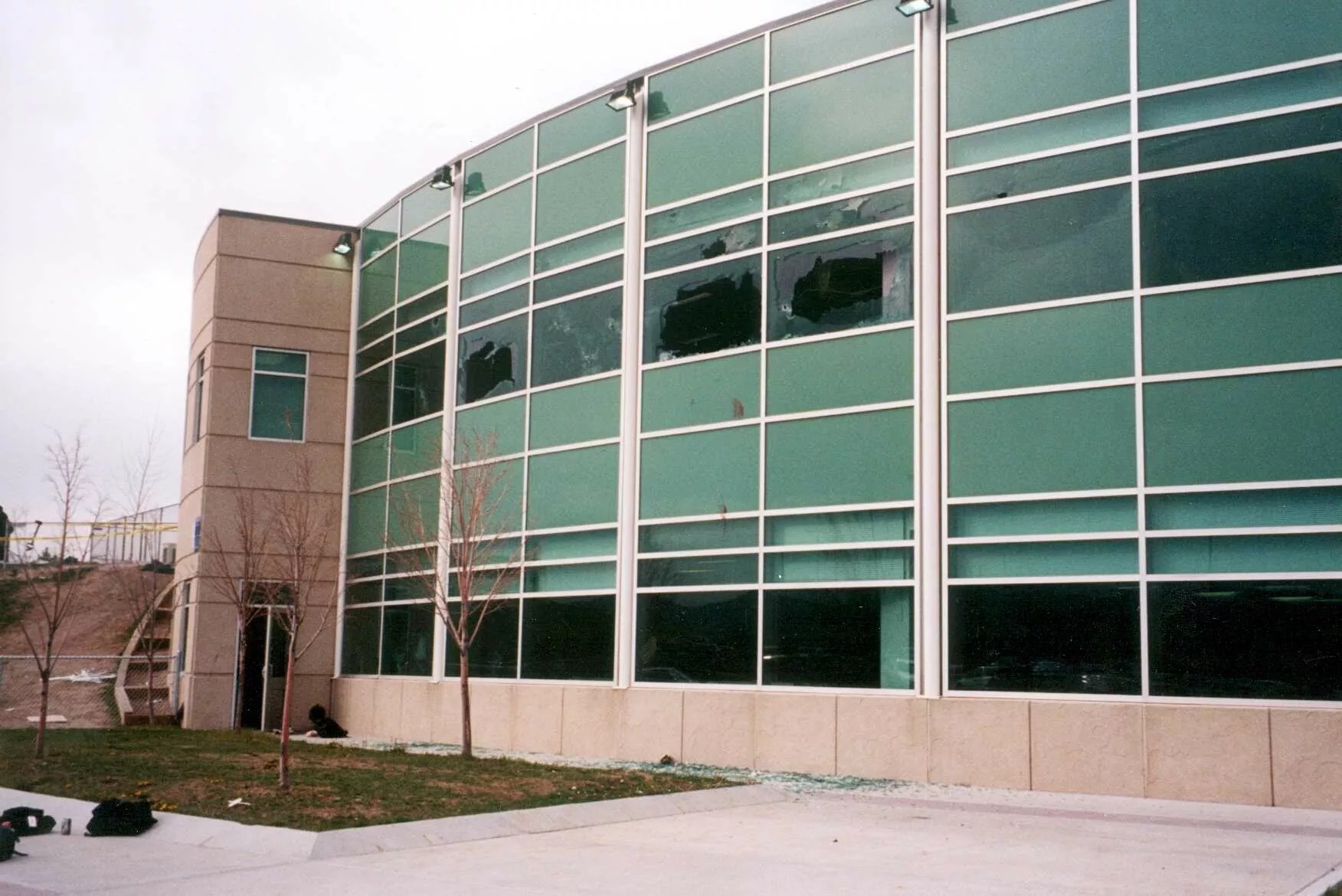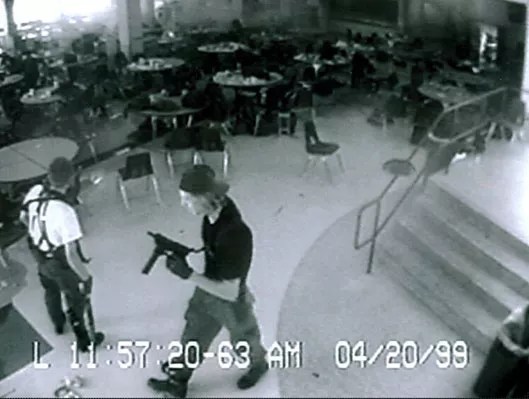
Getty Images

Audio By Carbonatix
Tomorrow marks 25 years since that dark day of April 20, 1999, when a teacher and twelve students at Columbine High School in Littleton were killed by two fellow students. There will be a vigil to honor those impacted by the Columbine shooting at 7:30 p.m. today, April 19, at which speakers will honor the victims and families; the location is TBD, depending on the weather.
In advance of this tragic anniversary, we asked Randy Brown, a parent and member of the Columbine community, to look back on what we’ve learned. Here’s his take:
I have been living, studying, reading and researching school shootings for 25 years – longer, if you count the two years before the tragedy at Columbine High School.
In 1997, my family first contacted the police regarding the two students who would kill twelve students – Cassie Bernal, Steven Curnow, Corey DePooter, Kelly Fleming, Matthew Kechter, Daniel Rohrbough, Rachel Scott, Isaiah Shoels, John Tomlin, Lauren Townsend and Kyle Velasquez – and mortally wound teacher Dave Sanders on April 20, 1999. Over the next two years, we reported them for many crimes including death threats, building and detonating pipe bombs, breaking the windshield on my son’s car, setting off firecrackers on our porch, shooting out a window in our garage with a paintball gun, and more. The police lied about our reports – and about us – for years, until the Colorado attorney general investigated, and proved that the police had concealed information and lied to not just the public, but the victims’ families.
Many children were physically wounded that day at Columbine, and all of us have lived with the trauma and memory.
The search for truth and the study of how to stop further school shootings has been my focus for many years. Here’s what I have found:
Regarding weapons and their control, no progress has been made. The weapons used at Columbine are still readily available. Semi-automatic weapons are easily acquired, with magazines that hold enough bullets that any shooter could fire as many bullets as they desire; the time it takes to reload a magazine in a semi-automatic weapon is only a few seconds. So many of these weapons have been sold in the last 25 years that control of the supply has actually become worse. Are you aware of the “duplex trigger” that fires bullets from a semi-automatic weapon at twice the cycle rate of a regular semi-automatic weapon? That is the opposite of progress. It has been all posturing and no results, despite the efforts of many good people.
I have seen no progress in mental health assistance, either. So many “experts” are out there, with so many different agendas, that nothing can take hold because there is no consistency. The mental health experts cannot even agree on what causes these mass shootings. They cannot fix what they do not understand. Some professionals still prescribe Selective Serotonin Reuptake Inhibitors, SSRIs, to teenagers, even though they are contraindicated, with warning labels on the package. In all these years, there has been a lot of talk but little progress.
Bullying and humiliation – thought by some, including criminologists like Lonnie Athens, to be the trigger for such violence – is almost ignored. Students are still made fun of. Teasing, bullying and humiliation are still present in almost every school, and no consistent program has been developed, much less instituted, to use in schools. There is very little acknowledgment of the damage that toxic schools create. I still see suicides, depression, anger, bullying and all the signs of toxic schools everywhere I look. In fact, most schools do not have an effective “no humiliation, no bullying” standard. It is very upsetting to see so much anger from humiliated children in online comments. The revenge motive for perceived or real injustices is everywhere, and amplified by social media. The school systems perpetuate the problem by keeping everything they know hidden in their files, protected by FERPA laws.

The killers inside the Columbine High School cafeteria.
Jefferson County Sheriff
At least there has been great improvement in police response. At Columbine, it took four hours to reach the shooters, who’d killed themselves hours before; in the meantime, Dave Sanders had died. At the recent shooting in Nashville, it took three brave police officers – Rex Engelbert, Michael Collazo and Jeff Mathes – three minutes to get to the school and three more minutes to neutralize the shooter. As Columbine showed us, once a shooter enters the school, time is the most important factor. The faster the police get to the active shooter, the lower the body count. That, of course, is very small consolation to the families of the three children and three adults who died at the Covenant School, but without the fast, efficient response of the officers, things could have been much worse. Think of Uvalde, Texas, for example, where the lessons of Columbine were ignored.
While police response time is key, I am no fan of the idea of arming teachers, a concept that’s been pushed nationally. There are armed teachers in Colorado. There are armed civilians at Columbine. I find this very distressing. An armed amateur with a loaded weapon is not qualified to try to do the job of SWAT members, who have trained for years and still face challenges. There is nothing worse than some amateur who thinks they are a good shot. They are not good shots, not in a crowded school full of innocent children. You have not heard about it, but an armed guard shot two innocent children at the STEM School shooting in Douglas County several years ago. He fired at a policeman and hit two innocent children. Soon we will have an example where an armed amateur will shoot and kill children at a school while trying to defend them. That is a circumstance that will ruin lives forever.
I am more optimistic about red flag laws, These are a great idea if controlled by the courts. But without threat assessment knowledge and a watchful eye on toxic-school environments, they have not been effective in controlling school shootings.
The Safe2Tell reporting method introduced across Colorado created an effective method for sending police to a school for a reported threat. But the school principal must first decide what constitutes a threat, and when to have 911 respond. The last time I looked, very few school principals were trained in threat assessment. In fact, as far as I am aware, the last reported threat for which 911 was called was canceled by the principal because he had walked the halls and found no danger. That is an absurd response to anyone who knows school shooting histories and remembers Jonesboro, where the shooters were outside the school and pulled the fire alarm. No danger was evident there at all. The danger is not always obvious. No teacher, administrator or principal should ever be able to cancel a 911 call. They are not qualified to make that decision.
Most critical, there has been no effort at all to control the violence in our society. If you doubt that, watch the John Wick movies, all four of them, and watch the Equalizer movies, all three of them. In these, violence is justified and acceptable. Watch video games that are first-person shooter games. Open your eyes and see the anger and violence in almost every aspect of our society, including movies, games, the news, television shows and the dark internet. Some shootings have been live-streamed by the shooters. Some of your children have watched these videos. Have you?
That is the overview of the last 25 years, and little to no progress has been made.
I guess our children and their safety in schools are not that important. Since school shootings are relatively rare, the death of students must be an acceptable loss to the leaders of our country, lawmakers in Colorado…and to all of us who have not demanded solutions.
I have had meetings with the staff of the current Colorado attorney general, and was essentially dismissed. The AG can be very concerned about the merger of two grocery store chains, but apparently has no interest in possible solutions to our children being murdered. The governor can be very concerned with introducing wolves into Colorado, but apparently is not concerned with children being murdered in our schools and on our streets.
There. The truth. The sad truth, 25 years after the Columbine tragedy.
More truth: Prevention of school shootings has to be the priority. Learn that humiliation creates violence, and that humiliation is the source of many school shootings and violent acts. Take away the humiliation, and you can take away the would-be killers’ anger before they get to the school.
Once they enter the school with a weapon, it is too late.
Randy Brown is a Columbine parent whose son, Brooks, was in school with Eric Harris and Dylan Klebold, the killers. He’s the author of The Inside Story of Columbine: Lies, Coverups, Ballistics, Lessons, and continues to follow the aftermath of the tragedy.
Alan Prendergast has written about Columbine extensively for Westword, and caught up with many of the survivors in advance of the twentieth anniversary for “Columbine Survivors Talk About the Wounds That Won’t Heal.” Read that story and all of his other Columbine coverage here.